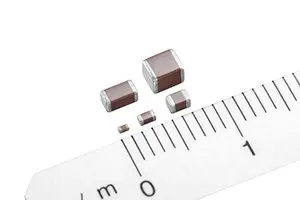source: TDK news
Jan. 24, 2017. TDK Corporation has expanded its CGA series of automotive-grade MLCCs for high-temperature applications: New MLCCs with X8L temperature characteristics have been introduced and the capacitance range of its existing X8R types has been extended.
With the new types, TDK’s lineup of X8L and X8R MLCCs features an unrivalled high capacitance range of up to 22 µF. These capacitors offer high reliability at temperatures from -55 °C to +150 °C, with a capacitance drift of just ±15 percent for the X8R types and +15/-40 percent for the X8L types. Mass production and sales of the new components is scheduled to begin in February 2017.
Increasingly automotive electronic control units are being located in the engine compartments or near other structural parts, where the electronic components must be able to withstand high temperatures and offer high reliability and performance. The new high-temperature MLCCs were made possible by the development of a new dielectric material that maintains excellent reliability even in extreme environments. To further improve reliability, the X8R dielectric material is now also available for soft-termination and conductive epoxy MLCCs, which help to prevent board flexure cracks and solder cracks caused by thermal stress. Thanks to their temperature characteristics and high capacitance values the new AEC-Q200 qualified MLCCs are suited for applications in high temperature environments such as engine compartments or in close proximity to transmission oil tanks. They also offer outstanding performance in smoothing and decoupling circuits of switch-mode power supplies for industrial equipment.
Glossary
- Soft-termination MLCC: The terminal electrodes consist of three metallic layers (Cu, Ni, Sn) with a conductive resin layer between the Cu and Ni layers.
- Conductive epoxy MLCC: The terminal electrodes consist of two metallic layers (Cu and AgPdCu alloy). These MLCCs can be mounted using a conductive epoxy on ceramic PCBs designed for high operating temperatures.
- X8R temperature characteristic: -55 °C to +150 °C with a capacitance drift of ±15%
- X8L temperature characteristic: -55 °C to +150 °C with a capacitance drift of +15% and -40%
Main applications
- Smoothing circuits and decoupling circuits in automotive engine compartments and in switch-mode power supplies for industrial equipment
Key data
| Series | Case size [IEC] | Rated voltage [V] | Max. capacitance | Temperature characteristics |
|---|---|---|---|---|
| CGA2 | 1005 (0402) | 16 to 100 | 47 nF | X8R |
| CGA3 | 1608 (0603) | 6.3 to 100 | 2.2 µF | X8R, X8L |
| CGA4 | 2012 (0805) | 6.3 to 100 | 10 µF | X8R, X8L |
| CGA5 | 3216 (1206) | 4 to 100 | 22 µF | X8R, X8L |
| CGA6 | 3225 (1210) | 16 to 100 | 22 µF | X8R, X8L |
* X8R is available for both soft-termination and conductive epoxy MLCCs


































